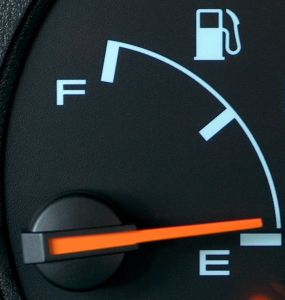
While
$7�$10 a gallon would be ground-
breaking in America, these prices would
not be trendsetting
internationally.
====

European drivers are already shelling out $9
a
gallon (which includes a $2-a-gallon
tax).
Get ready for another economic shock of major
proportions � a virtual doubling of prices at the gas pump to as much as $10 a
gallon.
That�s the message from a couple of analytical
energy industry trackers, both of whom, based on the surging oil prices, see
considerably more pain at the pump than most drivers realize.
Gasoline nationally is in an accelerated upswing,
having jumped to $3.58 a gallon from $3.50 in just the past week. In some parts
of the country, including New York City and the West Coast, gas is already
sporting a price tag above $4 a gallon. There was a pray-in at a Chevron station
in San Francisco on Friday led by a minister asking God for cheaper gas, and an
Arco gas station in San Mateo, Calif., has already raised its price to a
sky-high $4.62.
having jumped to $3.58 a gallon from $3.50 in just the past week. In some parts
of the country, including New York City and the West Coast, gas is already
sporting a price tag above $4 a gallon. There was a pray-in at a Chevron station
in San Francisco on Friday led by a minister asking God for cheaper gas, and an
Arco gas station in San Mateo, Calif., has already raised its price to a
sky-high $4.62.
Oil recently hit an all-time high of nearly $120
a barrel, more than double its early 2007 price of about $50 a barrel. It closed
Friday at $118.52.
a barrel, more than double its early 2007 price of about $50 a barrel. It closed
Friday at $118.52.
The forecasts calling for a jump to between $7
and $10 a gallon are based on the view that the price of crude is on its way to
$200 in two to three years.
and $10 a gallon are based on the view that the price of crude is on its way to
$200 in two to three years.
Translating this price into dollars and cents at
the gas pump, one of our forecasters, the chairman of Houston-based Dune Energy,
Alan Gaines, sees gas rising to $7-$8 a gallon.
the gas pump, one of our forecasters, the chairman of Houston-based Dune Energy,
Alan Gaines, sees gas rising to $7-$8 a gallon.
The other, a commodities tracker at Weiss
Research in Jupiter, Fla., Sean Brodrick, projects a range of $8 to $10 a
gallon.
Research in Jupiter, Fla., Sean Brodrick, projects a range of $8 to $10 a
gallon.

====


